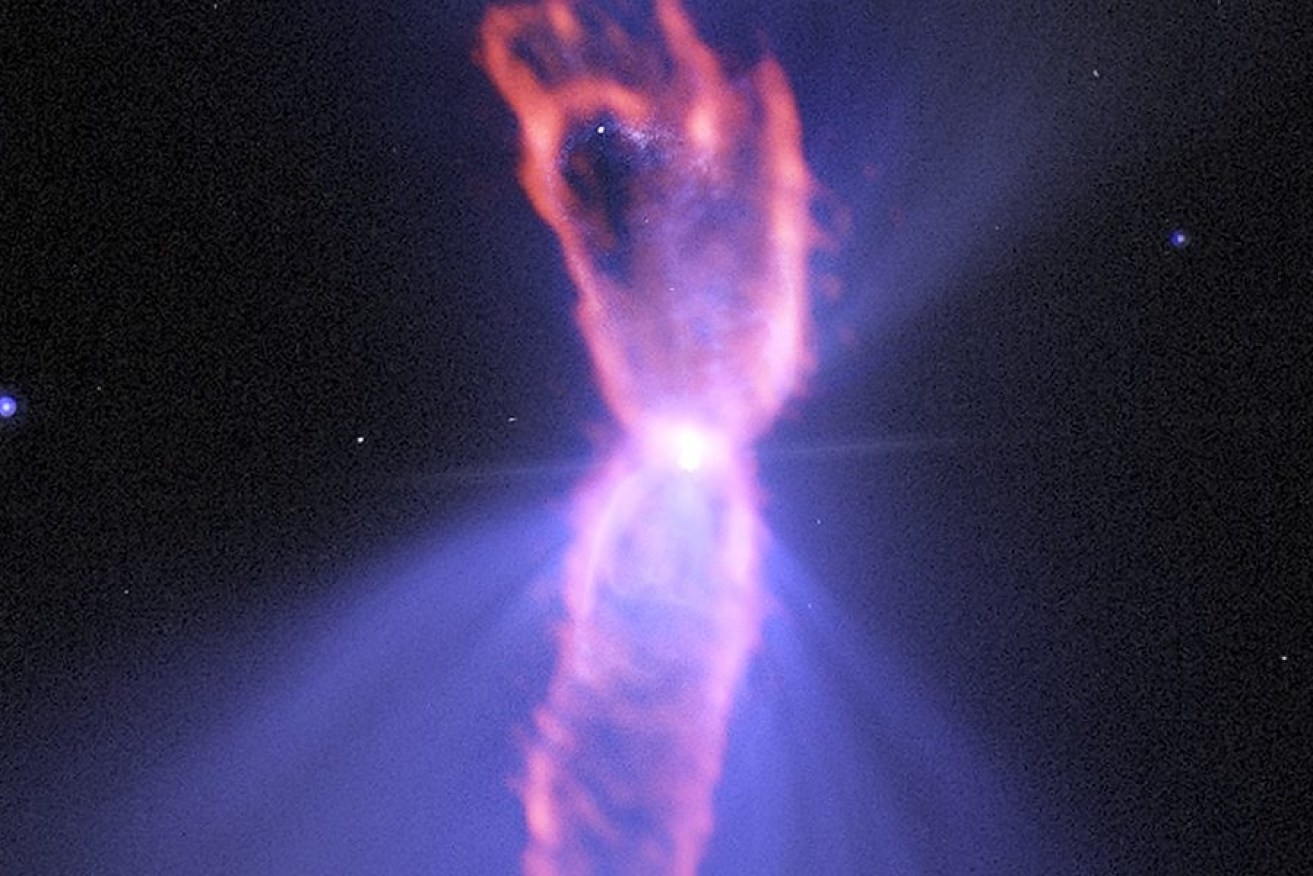This could be the coldest place in the universe

The Boomerang Nebula is only half a degree above absolute zero. Photo: ALMA (ESO/NAOJ/NRAO); NASA/ESA Hubble; NRAO/AUI/NSF
We usually picture stars as enormous balls of gas emitting unimaginable amounts of heat, but for more than 20 years, scientists have struggled to explain the coldest known object in the universe.
It’s an “ultra-cold” nebula that’s colder even than the natural background temperature of empty space. It’s called the Boomerang Nebula.
Now, scientists from the US, Sweden and Chile propose the Boomerang Nebula is the wreckage from a collision between two stars: a red giant (dying stars that swell and cool down) and a nearby star that was gravitationally locked on to the red giant.
Empty space is less than three degrees above “absolute zero” – the theoretical point where the laws of thermodynamic motion stop applying.
Located around 5000 light years away from Earth, the Boomerang Nebula, on the other hand, is a chilling half a degree above absolute zero.
Since its discovery in 1995, this difference in temperature stumped scientists. How could something born from nuclear fusion end up colder than the cosmos?
So Dr Raghvendra Sahai, an astronomer at NASA’s Jet Propulsion Laboratory, and his team pointed ALMA – the world’s most powerful observatory, based in Chile – towards the nebula seeking answers.
And they were rewarded with the first ever precise measurements of the Boomerang Nebula.
They concluded that a star must have plunged into the red giant, blasting the outermost part of the red giant into space at speeds 10 times faster than when a dying star explodes on its own.
Rushing out at these speeds from the gravity of the collided stars means the cloud of debris, made of gas and dust, becomes an ultra-cold outflow.
End-to-end, this hourglass-shaped cloud of debris stretches more than three trillion kilometres, or 21,000 times the distance between the Earth and the sun.
https://www.youtube.com/watch?v=LgqqqZZd3ek
ANU astrophysicist Dr Bradley Tucker said the Boomerang Nebula is actually a snapshot of a star’s evolution as it transitions from a red giant to a planetary nebula. A planetary nebula is a shell of gas ejected from a red giant after it burned through all its fuel and collapsed.
This transition is quick in astronomical terms, taking only a matter of thousands of years, the authors suggest. Eventually, this frigid place will balance temperatures with the relatively warmer outside empty space, like pouring warm water into a cold bath.
“I know a lot of people have looked at different types of nebula to try and figure out their evolution, and here you have a snapshot of one in an in-between stage,” Dr Tucker said. “You really see a snapshot of what it will be and what it was at the same time.”
Since most stars in the universe are thought to have a partner star gravitationally locked to each other, Dr Tucker said the Boomerang Nebula’s star collision might be a good example of what happens to stars that don’t explode as supernova.
“What would be cool, and I assume the authors are going to do this, is point ALMA where possible at some other similar nebulas and see whether they show this or not,” Dr Tucker says.
“You could probably put together a picture that this really is an evolving process that turns A into B.”
Their findings were reported in Astrophysical Journal.








